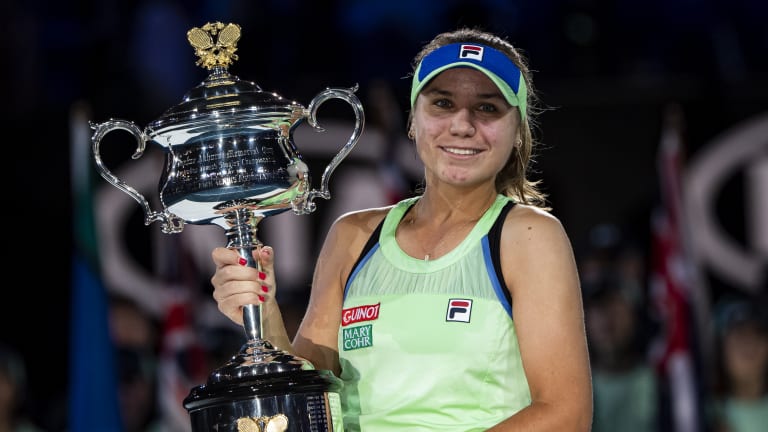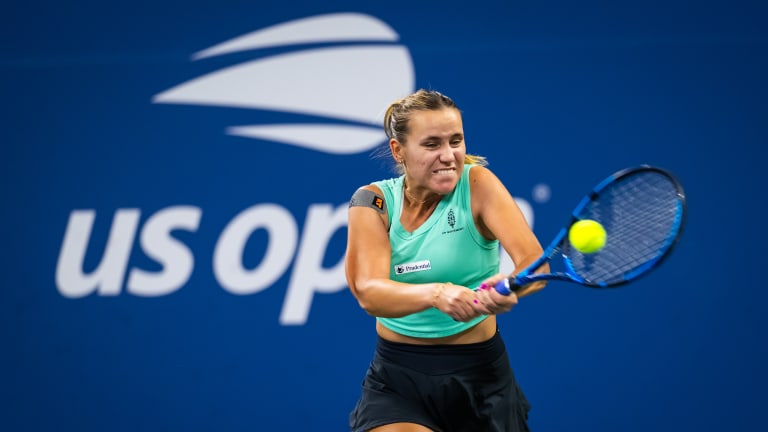Your Game
TECH Talk: Sofia Kenin is back(hand) and making moves in San Diego
By Sep 14, 2023Your Game
Tecnifibre releases special-edition Danille Collins pickleball paddle
By Oct 04, 2025Your Game
Racquet Preview: Solinco unveils Blackout V2
By Sep 24, 2025Your Game
Geared Up: Victoria Mboko is turning heads in all Wilson
By Sep 23, 2025Your Game
Racquet Review: Dunlop CX 200 (18x20) Limited Edition
By Sep 17, 2025Your Game
Racquet Review: Wilson Ultra Pro 99 v5
By Sep 14, 2025Your Game
Yonex goes dark on Percept racquet line
By Aug 28, 2025Your Game
Babolat gives the Pure Strike a makeover with carbon grey cosmetic
By Aug 25, 2025Your Game
Head launches second edition of Speed Legend series
By Aug 24, 2025Your Game
Asics releases its Night Energy Collection
By Aug 23, 2025TECH Talk: Sofia Kenin is back(hand) and making moves in San Diego
Kenin has taken out No. 6 seed Veronika Kudermetova, fellow American Katie Volynets, and Anastasia Potapova to secure a spot in the semifinals.
Published Sep 14, 2023
Advertising

At 22 years old, Sofia Kenin became the youngest American player since Serena Williams to win a grand slam.
© © TENNIS PHOTO NETWORK
Advertising

Shot placement makes or breaks a tennis player.
© 2023 Robert Prange